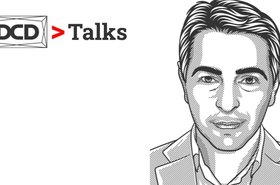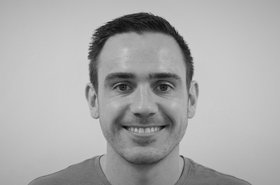“People talk about energy efficiency, risk management, availability, and so forth, but there is a massive amount of capacity being stranded, and no one is talking about the reasons why, it’s just accepted as fact,” Hassan Moezzi of Cadence told DCD CEO George Rockett at DCD>Connect, Silicon Valley.
Moezzi is of the opinion that stranded capacity is preventable, and is caused by something called ‘fragmentation.’
For those unfamiliar, fragmentation is all about capacity, in the sense that data center operators buy capacity, with the view to utilize it to run their applications. The problem being, whilst people talk about ‘buying capacity,’ utilizing that capacity is actually significantly limited – which is what we call ‘stranded capacity.’
“Stranded capacity occurs because you buy an infrastructure that has space, power and cooling, and that would be measured in say, a megawatt of capacity. As an enterprise customer, you will be lucky to be able to access 60 percent of that one megawatt of capacity over the lifecycle of that data center.”
The reason being, according to Moezzi, that the design of the data center is never followed by operation. “Operation always breaks the design rules,” he said.
As a result, space, power, and cooling is fragmented, leading to design capacity becoming stranded.
“This is a real physics issue because you will never achieve the design capacity,” said Moezzi. “The question is how close can you get to the original design capacity? And that's where our approach of digital twins is the only scientific way of being able to achieve that.”
The digital twin to which Moezzi refers is the concept of simulating the entire data center supply chain, a virtual world if you will, which can predict the behavior and physics of the data center itself.
“From the chip, to the thermal mechanical behavior of that chip, across the board itself, across the chassis of the computer, to the rack, to the environmental side, the infrastructural side - we model the entire data center,” explained Moezzi.
“Using our digital twin technology, we can show owners and operators both the scientific and visual aspects of fragmentation. They can then take that information, decide on how to reduce it, and how to mitigate risks that potentially could occur down the line.”
In doing so, not only can operators achieve cost savings in terms of capacity retention and energy efficiency, but it could have a positive impact on ESG objectives, too.
“Stranded capacity basically equates to environmental impact, because if you're only using 60 percent of your capacity, you're building roughly three data centers for every two that you need. By using this technique, you can actually reduce the carbon footprint impact by utilizing what's already available to you.”
Not only can a digital twin diagnose fragmentation, but Moezzi believes it should be part of operational best practice.
“We can solve the problem pretty much straight away, but operators need to be using this digital twin on an operational basis, on an ongoing basis, or problems will only come back - that's the key,” he said. “This is a discipline that is alien to the present market. The present market is using rules of established practices, we’re saying that there's a better way of doing it.”
To find out more about how to prevent capacity loss, check out the full DCD>Talk here.
More from Cadence
-

DCD>Talks Preventing Fragmentation & Capacity Loss with Hassan Moezzi, Cadence
Tune into this DCD>Talk from our Silicon Valley event, where we dive into the strategies operators can adopt to prevent fragmentation and capacity loss, with Hassan Moezzi, Cadence
-

Sponsored Enter the simulation
Managing the intertwined challenges in modern data centers with simulation
-

Sponsored Improving data center performance with simulation
With a myriad of data center challenges facing operators today, could simulation be the cure-all?
